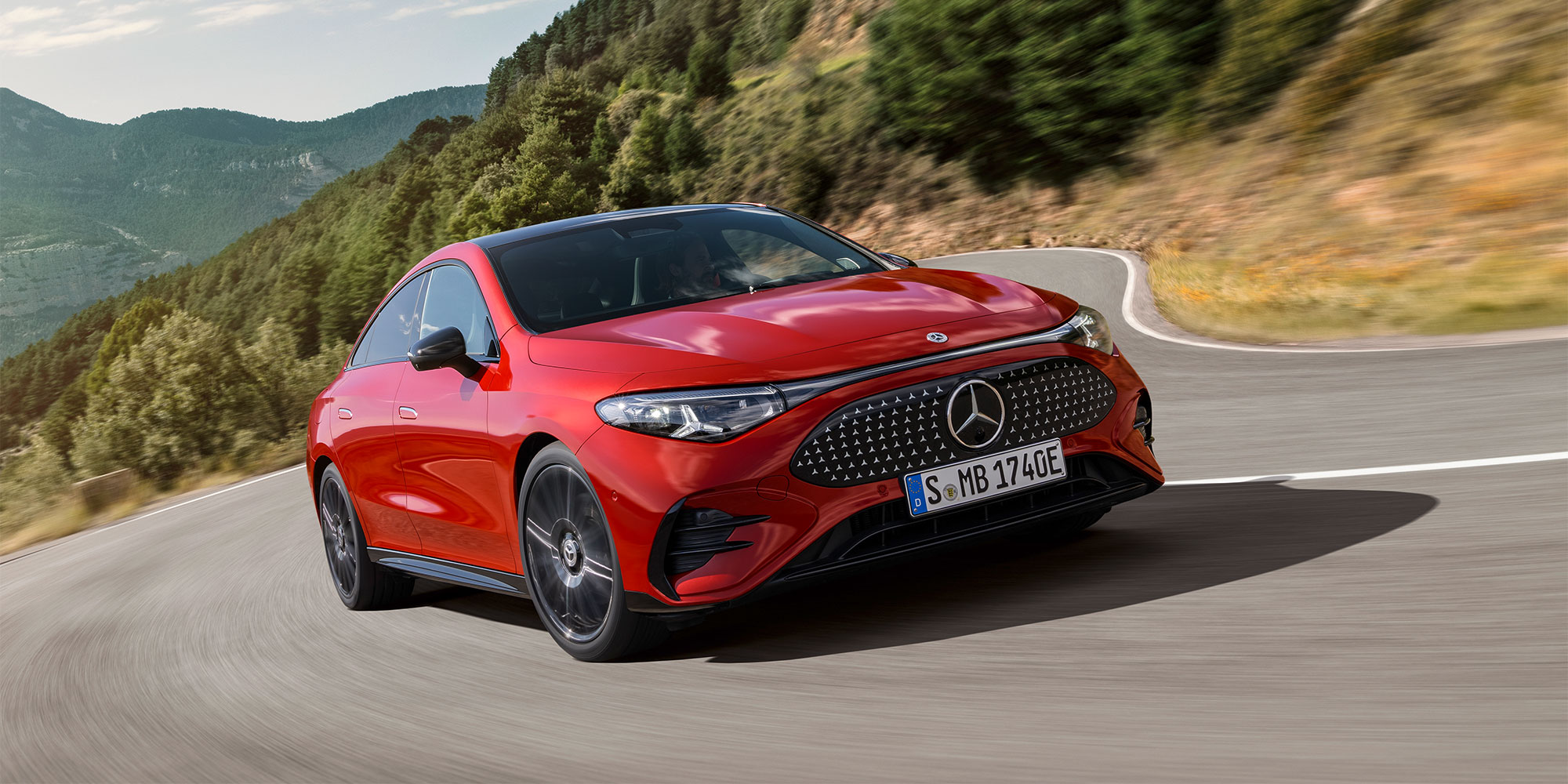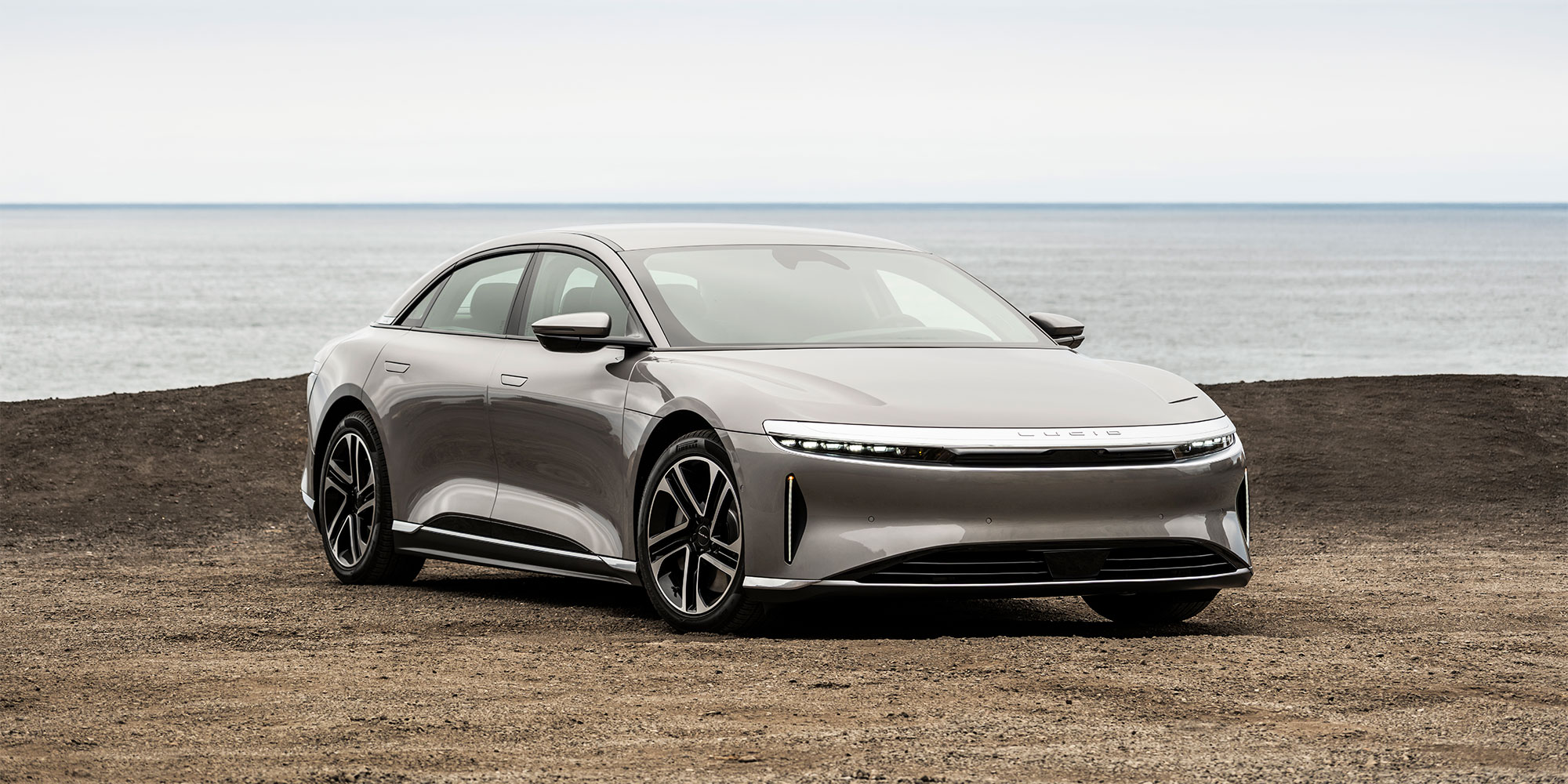
By clicking a retailer link you consent to third-party cookies that track your onward journey. This enables W? to receive an affiliate commission if you make a purchase, which supports our mission to be the UK's consumer champion.
Longest-range electric cars for 2025

In this article
- Top 10 electric cars with the longest claimed ranges
- 5 longest-range EVs we’ve tested
- Why are claimed figures unrealistic?
- The longest-range EV (that you can’t buy)
- Expert opinion: Why you should consider efficiency as well as range
- How wheel size affects EV range
- How to boost your EV’s range
Maximum range is an important consideration when buying an electric car (EV). All models have an official range based on industry-standard tests, but our independent tests show you’re very unlikely to match these figures.
While the official tests provide a good baseline to show how far an EV can travel on a single charge, our lab tests reveal they aren’t always accurate in relation to real-world driving.
Read on to discover the EVs with the longest official range, how our EV range tests are more intensive than official tests and give more realistic results, and why efficiency is arguably more important than range.
Best electric cars for 2025: view the models that scored highly in our lab tests
Top 10 electric cars with the longest claimed ranges
Below, we’ve listed the 10 longest-range EVs that are currently available to buy new in the UK.
These figures are based on the versions of each model with the largest battery option and use official WLTP (Worldwide Harmonised Light vehicles Test Procedure) figures. We've linked to our reviews of models where we have them, but note that we may not have tested the longest-range version of the car.
| Car (click for review) | Longest-range trim | List price | Official range (miles) |
|---|---|---|---|
| BMW iX3 | 50 xDrive (20in aerodynamic wheels) | £58,755 | 500 |
| Mercedes-Benz CLA | 250+ with EQ technology Sport Edition | £45,615 | 483 |
| Mercedes-Benz EQS | 450+ AMG Line Premium Saloon | £112,620 | 481 |
| DS N°8 | Pallas FWD Long Range 245hp (19in wheels) | £54,840 | 466 |
| Tesla Model 3 | Long Range Rear-Wheel Drive (18in wheels) | £44,990 | 466 |
| Audi A6 e-tron Sportback | Sport e-tron Performance | £69,940 | 464 |
| MG IM5 | 100 Long Range | £44,995 | 441 |
| Audi A6 e-tron Avant | Sport e-tron Performance | £71,740 | 438 |
| Polestar 3 | Long range Single motor | £67,910 | 438 |
| Peugeot e-3008 | Allure Long Range 97kWh 230hp | £48,760 | 435 |
As the table shows, Mercedes-Benz and Audi sell more long-range EVs than any other brand, with two of their models appearing in our table.
BMW’s newly-launched iX3 model leads the way, although the much cheaper Mercedes-Benz CLA's range figure is impressive considering it’s the third-cheapest car in this list.
We’ve also given the wheel sizes for the BMW, DS and Tesla as they’re both available with larger wheels, which use more energy and deliver shorter range as a result (we explain more about the impact of wheel size on range).

5 longest-range EVs we’ve tested
To illustrate how claimed range differs from our independent lab tests, the table below shows the five EVs with the longest claimed range that we’ve tested, along with the range figure we achieved in our tests and the percentage difference between the two.
Only logged-in Which? members can see the car names in the table below. Not yet a member? Join Which? today to get instant access.
| Car (click for review) | Official range (miles) | Which? range test (miles) | % difference (claimed v tested) |
|---|---|---|---|
Sign up to reveal Get instant access to this and all our scores and recommendations Unlock tableDigital £8.99 per month, cancel any time. Already a member? Log in | 453 | 360 | 21% |
422 | 354 | 16% | |
414 | 362 | 13% | |
406 | 332 | 18% | |
394 | 331 | 16% |
Sign up to reveal
Get instant access to this and all our scores and recommendations
Unlock tableDigital £8.99 per month, cancel any time.
Already a member? Log in
Why are claimed figures unrealistic?
Since 2019, the official range of all current EVs is based on WLTP tests – prior to this they were tested on the now defunct NEDC (New European Driving Cycle) programme.
During the WLTP test, the car is accelerated and decelerated to different speeds. However, one significant issue is the focus on low-speed driving. The vehicle’s average speed during the entire test is under 30mph, with the car travelling at motorway (and higher) speeds for only around four of the 30 minute total test time.
The tests are carried out at a lab-set temperature of 23ºC, with the car’s climate control system switched off. They also factor in charging losses that are typically seen when recharging an EV, something that can vary a lot between different EVs (according to our lab test, which also factors in charging losses when calculating range and efficiency figures).
Although no lab test can perfectly test EV range, we believe our lab tests better reflect real-word driving, with more high-speed motorway running than official tests. We also turn on the car’s climate controls and set the temperature to 20ºC.
Our lab results suggest that you’ll experience around a 16% decrease in overall range when compared to WLTP figures, although this varies between cars.
For more information, read our guide on how we test cars.
The longest-range EV (that you can’t buy)

The BMW iX3 isn’t the longest-range EV out there.
The longest-range EV is in fact the Lucid Air: a luxury American car that has been sold in Germany, the Netherlands, Norway and Switzerland since 2023. In Grand Touring form with the optional 19-inch wheels, it has a WLTP range of 596.5 miles, easily beating the iX3's figure.
It’s unclear whether the Air will ever be sold in the UK as the company never originally planned to offer it in right-hand drive form. Unsurprisingly, it’s also expensive (the cheapest Air costs the equivalent of £73,000 in Germany).
If it was ever offered in the UK, the claimed range would be enough to take you from Southampton to Inverness on a single charge (with 3.5 miles to spare).
Expert opinion: Why you should consider efficiency as well as range

Dino Buratti, Which? cars expert
While many people focus on an EV’s range, our car tests also calculate something that’s arguably more important: efficiency. We take the tested efficiency into account when reviewing cars.
Ultimately, an efficient EV will be cheaper to run than an inefficient one. For example, the difference in running costs of the first Mercedes-Benz EQV we tested and the rear-wheel drive Hyundai Ioniq 6 is £333 (based on driving 5,200 miles a year and charging at home with the current price cap of 25.73p/kWh). A more efficient car is also more environmentally friendly to run as less energy is needed to run the car (as highlighted by our Eco Buy cars).
And while a long range is desirable, many drivers will rarely need to use it. Our latest car survey shows the average motorist only drives 14 miles per day, a distance that even a short-range (but efficient) EV can travel with ease.
So if you’re thinking about getting an EV and won’t be going on regular long journeys, choosing an efficient one should be a more important consideration than one with a long driving range.
Should you buy an electric car? Read our jargon-free guide to find out
How wheel size affects EV range
For any given car, the bigger the wheels, the worse the electric range.
Bigger wheels are heavier and tend to have wider tyres with more rolling resistance, which takes more energy to accelerate and maintain speed. And that extra energy has a negative impact on overall range.
We asked ClearWatt (an EV battery health resource for car buyers) to provide us with some examples of how wheel size affects real-world range. ClearWatt gathers data from real EVs on the road to come up with its own figures for range.
This table shows a selection of examples where the difference between the best and worst wheels of a given car can make a noticeable difference to its range.
Car (click for review) | Year and trim | Largest wheel size (inches) | ClearWatt range on largest wheels | Most-efficient wheel size (inches) | ClearWatt range on most-efficient wheels | Range improvement |
|---|---|---|---|---|---|---|
| BMW i4 | 2024 eDrive40 | 20 | 214-237 | 17 | 276-305 | 27% |
| Hyundai Ioniq 6 | 2023 RWD Long Range | 20 | 233-258 | 18 | 276-306 | 19% |
| Audi A6 | 2024 Sportback e-tron | 21 | 300-332 | 20 | 333-368 | 11% |
| Mercedes-Benz EQS | 2024 450+ | 22 | 342-378 | 21 | 371-410 | 10% |
| Volkswagen ID.7 | 2024 Pro S | 21 | 256-292 | 19 | 289-319 | 9% |
| BMW iX | 2025 xDrive 60 | 23 | 278-307 | 21 | 304-336 | 9% |
| Tesla Model 3 | 2023 Long Range Dual Motor | 19 | 288-318 | 18 | 311-343 | 9% |
| Volvo ES90 | 2025 Twin Motor | 22 | 287-317 | 21 | 309-341 | 9% |
| Tesla Model S | 2025 Plaid | 21 | 281-311 | 19 | 306-338 | 9% |
| DS N°8 | 2025 FWD Long Range | 21 | 308-340 | 19 | 323-357 | 7% |
At the top of the list is the BMW i4 eDrive 40; ‘downgrading’ from 20 to 17-inch wheels can improve your range (and therefore efficiency) by more than a quarter, according to ClearWatt.
BMW’s own WLTP data suggests the change is less than 10% (353 to 377 miles), but even if the reality is somewhere in between, if you drive a lot of miles this could make a genuine difference to your ongoing costs of charging.
It’s well worth seeing how these figures change as you’re configuring your car, and be sure to check with your dealer what size wheels a model comes with so you know what to expect.
How to boost your EV’s range
Here are some of our expert tips for eking out your EV’s range.
Drive slower on the motorway
If you aren’t in a hurry to reach your final destination, consider driving below the speed limit. The car’s electric motor won’t be spinning as fast and you’ll use less energy as a result.
Accelerate gradually
While it can be tempting to accelerate quickly in an EV (as they’re often very powerful), doing this a lot could leave you short on range when you need it, so go easy on that throttle. Accelerating gradually may also mean you don’t need to charge en route, which could actually end up making your journey faster.
Make the most of regenerative braking
Most EVs come with regenerative braking, which uses energy from slowing down the car to charge the battery. Many also allow you to adjust the strength of the regen system. It can take time to get used to, but if you drive in town or down hills a lot, using a strong regen setting can increase your car’s range by several miles in a single journey.
Use your car’s eco driving mode
Most cars have various driving modes. We’d recommend sticking to the car’s ‘eco’ or ‘efficient’ mode to conserve range as this will dull the response of the electric motor to accelerator inputs.
Make the most of your car’s sat nav
Many sat nav systems allow you to configure what sort of route you want to take. This can include setting energy efficient routes, and doing this could help you save range. If your car doesn’t have this function, you can plan ahead by setting Google Maps to calculate your journey specifically for an EV (on mobile, open Google Maps, tap your profile icon, Settings, then 'Your vehicle').
Compare car insurance
Find the right policy for your vehicle using the service provided by Confused.com
Get a quote now